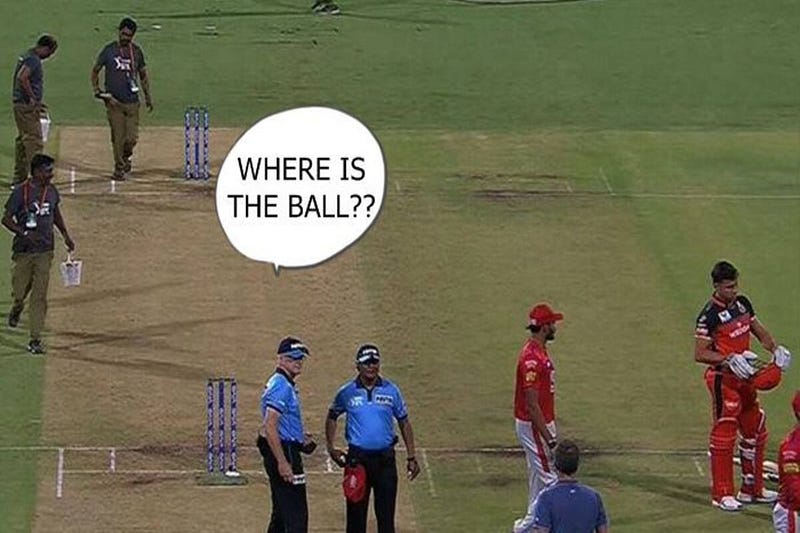Have you ever come across a cricket match where the ball flies out of sight but the striker and runner keep running between the wickets? And suddenly the fielder calls for a Lost Ball?
Even in gali cricket, the ball is often hit so hard that fielders are unable to recover it.

In the case of a Lost ball, the rules and regulations are slightly different and they follow International Law 20.
Before we jump into the rules and regulations, let’s understand what is a lost ball.
What is the lost ball in cricket?
A bowled ball is called a “Lost Ball” when it cannot be found or recovered.
In such a case, runs made by the batter running between the wickets or a 6 runs, whichever is the highest are awarded to the batting team’s score. Additionally, runs made when the call of “lost ball” is made are also counted.
What are the rules for a lost ball in cricket?
According to Cricket Law 20,
1. Fielder calls for Lost ball
Any fielder can call for a Lost ball if they are unable to recover the ball. The ball becomes dead as soon as it is called a lost ball. From here Law 18.12(a) (Batter returning to wicket he has left) takes over and shall apply instantly.
2. Ball replaced with comparable ball
If the ball is lost or becomes unfit for playing, umpires can replace it with a ball that has comparable wear and tear as the previous ball. The umpire informs all players and the fielding captain about the replacement of the ball.
3. Scored runs
A. The penalty imposed for a wide or No ball, if applicable, is combined with any penalties under either Laws 18.5(b) (Deliberate short runs) or 42 (Fair and unfair play) that are relevant before the call of the Lost ball.
B. The batting side is additionally granted runs either (i) the runs secured by the batter, combined with the run in progress at the instant of the call for Lost Ball, or (ii) 6 runs, whichever is higher out of the two.
Runs to the batting side are awarded to the striker if the ball has been hit by the bat, but otherwise, to the total of Byes, Leg byes, No balls, or Wides, as applicable.
So now you know that in case of a Lost Ball, the batting team gets the leeway to score as many runs as they can unless the fielding team calls for a Lost ball.
Also check out cricket umpire hand signals
Let’s say the batters have crossed for 3 runs and a lost ball is called, 6 runs will be credited to the batting side and the batter will remain at the end they were when Lost Ball was called. Now, in the case where a batter somehow completes 8 runs and crosses for the 9th run when Lost Ball is called, 9 runs will be scored by the batting team.
What is the difference between a lost ball and a dot ball?
While a lost ball is difficult to find and recover, a “dot ball” is a legal delivery where the batter is unable to score any runs and no wickets are taken by the bowler.
Well, honestly, a Lost ball is a rare incident in professional cricket but happens frequently in Grassroots cricket because of space restrictions and uncertain landscape.
If you are a gully cricketer and play cricket with all your force, what rules do you and your teammates follow for a Lost Ball?
Do share your innovative rules with our readers in the comments.
I am Dhaval Jain, SEO All-Rounder at CricHeroes.
CricHeroes is an ultimate Cricket Scoring App and the world’s only true Cricket Network. With more than 30 million registered cricketers using CricHeroes to Live Score their Local Cricket Matches and Tournaments, CricHeroes is already the number one Cricket Scoring App in the world!










